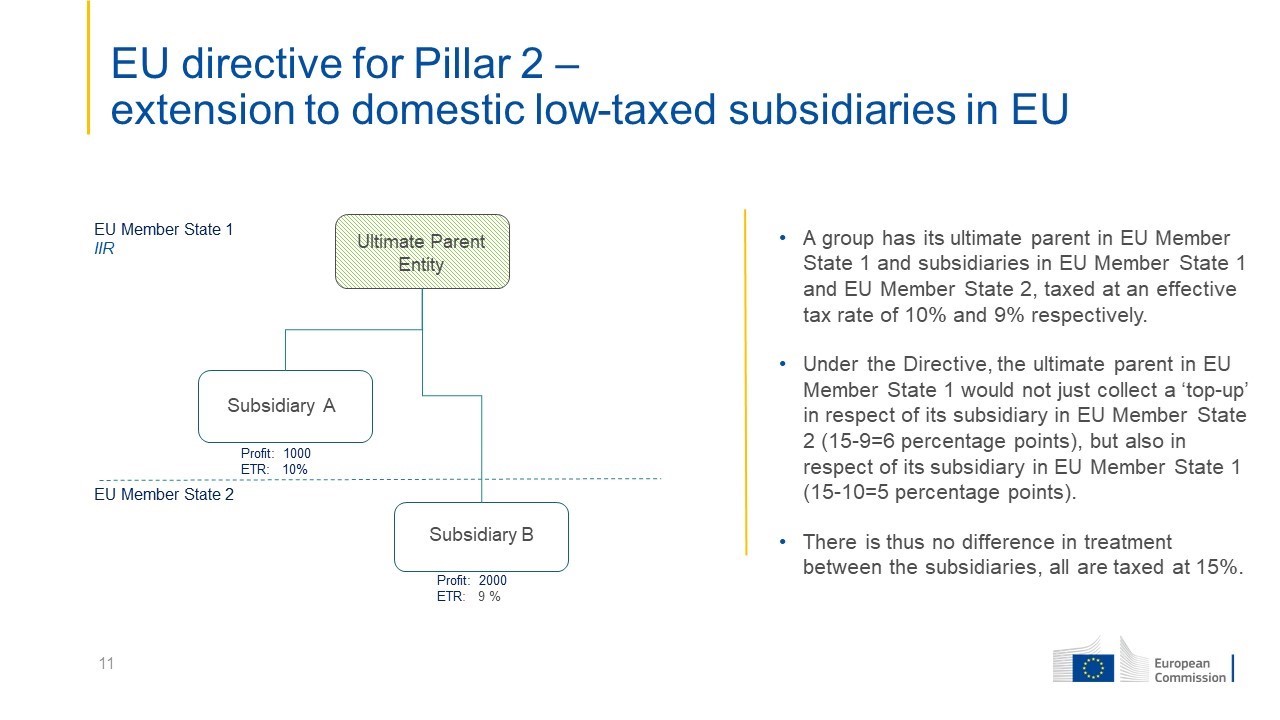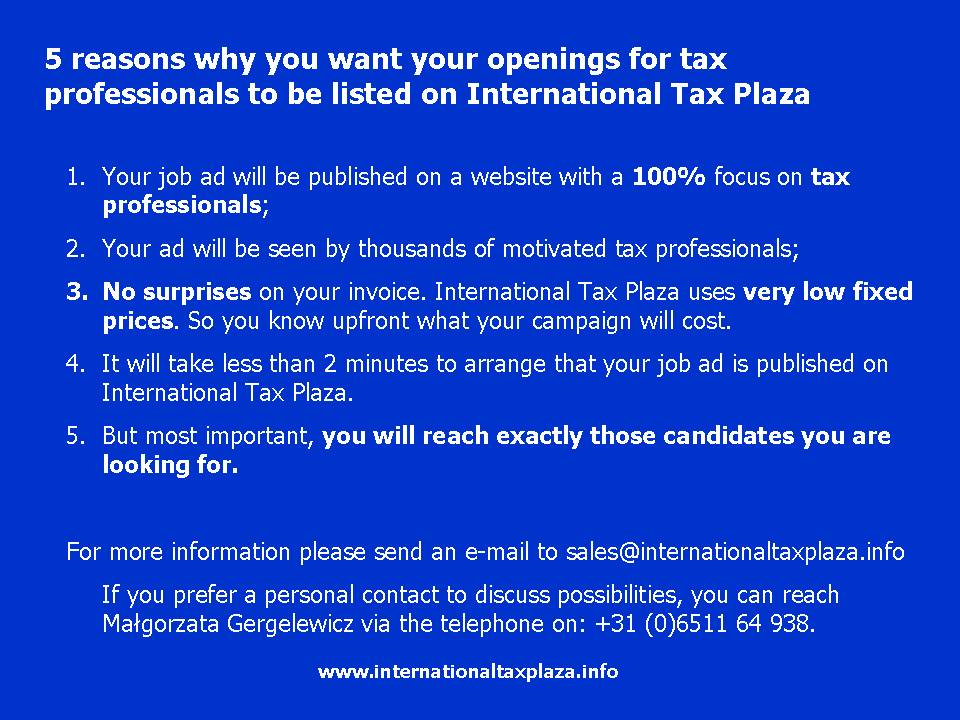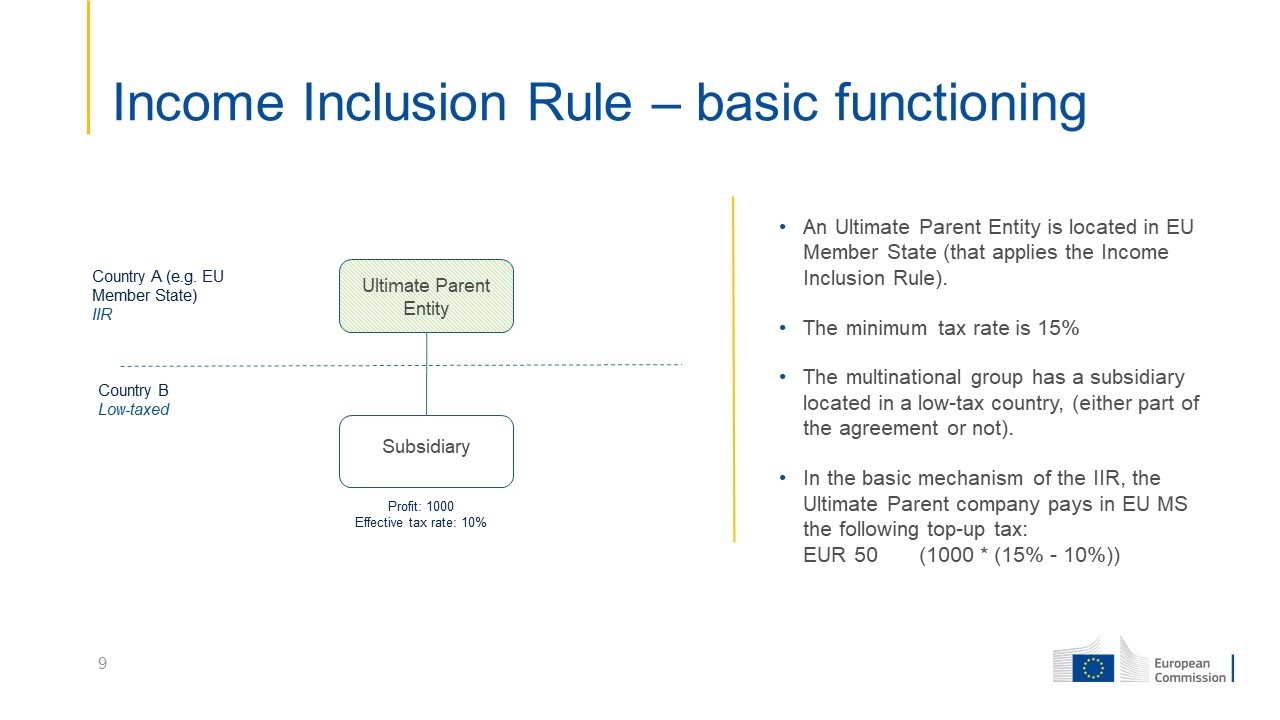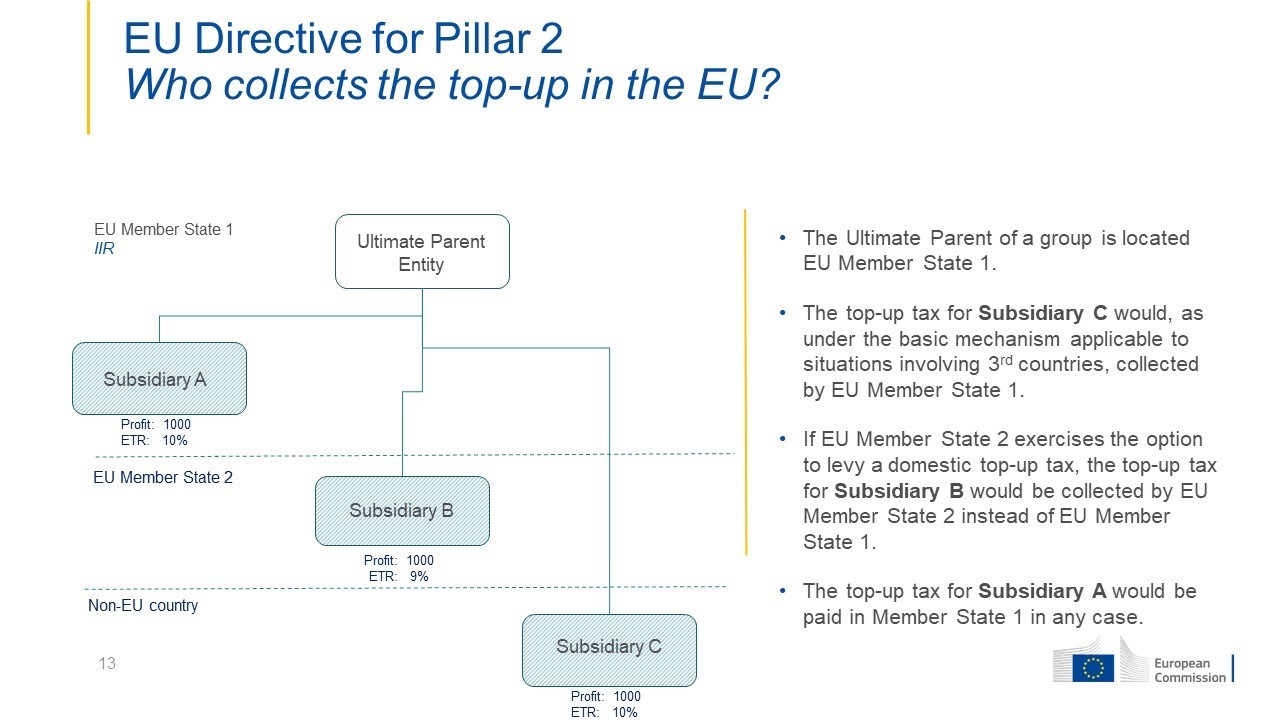On December 22, 2021 the European Commission released a proposal for a Council Directive on ensuring a global minimum level of taxation for multinational groups in the Union. The proposal delivers on the EU’s pledge to move extremely swiftly and be among the first to implement the recent historic global tax reform agreement, which aims to bring fairness, transparency and stability to the international corporate tax framework.
The proposal follows closely the international agreement and sets out how the principles of the 15% effective tax rate – agreed by 137 countries – will be applied in practice within the EU. It includes a common set of rules on how to calculate this effective tax rate, so that it is properly and consistently applied across the EU.
To whom do the rules apply?
The proposed rules will apply to any large group, both domestic and international, including the financial sector, with combined financial revenues of more than €750 million a year, and with either a parent company or a subsidiary situated in an EU Member State.
Which entities do not fall under the scope of the rules?
In line with the OECD/G20 Inclusive Framework agreement, government entities, international or non-profit organisations, pension funds or investment funds that are parent entities of a multinational group will not fall within the scope of the Directive on the OECD Pillar 2. This is because such entities are usually exempt from domestic corporate income tax in order to preserve a specific policy outcome. This may be because the entity is carrying out governmental/quasi-governmental functions, or to ensure that funds or pensions do not risk double taxation.
How will the effective tax rate be calculated?
The effective tax rate is established per jurisdiction by dividing taxes paid by the entities in the jurisdiction by their income. If the effective tax rate for the entities in a particular jurisdiction is below the 15% minimum, then the Pillar 2 rules are triggered and the group must pay a top-up tax to bring its rate up to 15%. This top-up tax is known as the ‘Income Inclusion Rule’. This top-up applies irrespective of whether the subsidiary is located in a country that has signed up to the international OECD/G20 agreement or not.

Who will make the calculations?
In the OECD/G20 Inclusive Framework agreement, a transparent way of calculating the effective tax rate was agreed by all 137 countries involved. This is reflected in the proposed Directive. The calculations will be made by the ultimate parent entity of the group unless the group assigns another entity.

What happens if a group is based in a non-EU country where the minimum tax rate is not enforced?
If the global minimum rate is not imposed by a non-EU country where a group entity is based, Member States will apply what is known as the ‘Undertaxed Payments Rule’. This is a backstop rule to the primary Income Inclusion Rule. It means that a Member State will effectively collect part of the top-up tax due at the level of the entire group if some jurisdictions where group entities are based tax below the minimum level and do not impose any top-up tax. The amount of top-up tax that a Member State will collect from the entities of the group in its territory is determined via a formula based on employees and assets.


Are there any exceptions?
The rules provide for an exclusion of minimal amounts of income to reduce the compliance burden. This means that when the revenues and the profits in a jurisdiction are under a certain minimum amount, then, no top-up tax will be charged on the profits of the group earned in this jurisdiction, even when the effective tax rate is below 15%. This is known as the de minimis exclusion.
Moreover, companies will be able to exclude from the top-up tax an amount of income that is at least 5% of the value of tangible assets and 5% of payroll. This is called a ‘substance carve-out’.
The policy rationale for a substance carve-out is to exclude a fixed amount of income relating to substantive activities like buildings and people. This is a common aspect of corporate tax policies worldwide, that seeks to encourage investment in economic substance by multinational enterprises in a particular jurisdiction. This exclusion also focuses the rules on excess income, such as that related to intangible assets, which is more susceptible to tax planning.
The agreement excludes from the scope income earned in international shipping, as this particular industry is subject to special tax rules. Special features such as the capital-intensive nature, the level of profitability and long economic life cycle of international shipping have led a number of jurisdictions to introduce alternative taxation regimes for this sector. The widespread availability of these alternative tax regimes means that international shipping often operates outside the scope of corporate income tax.
These exclusions are not going to distort the calculations of the effective tax rate.
Is there a transition period when it comes to the substance carve-out?
For the first 10 years, there is a transitional rule where the substance carve-out starts off at 8% of the carrying value of tangible assets and 10% of payroll costs. For tangible assets, the rate declines annually by 0.2% for the first five years and by 0.4% for the remaining period. In the case of payroll, the rate declines annually by 0.2% for the first five years and 0.8% for the remaining period.
What are the next legislative steps?
Member States will need to unanimously agree in Council. The European Parliament and European Economic and Social Committee will also need to be consulted and give their opinion.
It is important to note that EU members of the OECD Inclusive Framework are already supporting the global agreement that the Commission proposal is implementing. The only EU Member State that is not a member of the Inclusive Framework, and as such has not formally committed to the agreement, is Cyprus. The EUropean Commission states however that it expects Cyprus to support the Directive.
The text of the proposed Directive can be found here.
A Q & A on the proposal you can find here.
Copyright – internationaltaxplaza.info




